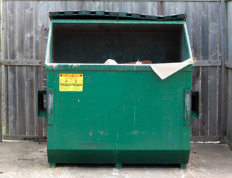Keeping a dumpster on the job site saves workers time by eliminating the need to sort through waste or deliberate where dangerous items should be stored. Baltimore Dumpster Rental consolidates trash, preventing it from drifting into the environment and causing safety hazards.
Before renting a dumpster, take a list of what you will be disposing of and the size of each item. Different types of debris require different containers, and some are banned altogether.
When you work on a large project or need to clean up your home, yard, or office, it’s common to produce a lot of waste. With a dumpster rental service, getting rid of your garbage and other waste is as simple as a quick call and a scheduled pickup. You’ll have less to worry about and have a more organized space, which will help you feel less stressed.
If you’re working on a remodeling job or cleaning up after a big event, you have enough on your plate without having to deal with piles of trash as well. With a residential dumpster, disposing of your materials is easy and you’ll have more time to focus on the project at hand.
The same goes for larger projects, such as construction or business renovations. Renting a commercial dumpster makes the job easier for everyone involved and will help ensure the project is completed on time and within budget.
Another benefit of a dumpster rental is that it’s an environmentally friendly way to handle your waste. With a dumpster, you can rest assured your garbage will be disposed of properly, which will help keep the environment healthy and safe for all living things.
It’s a much better alternative to leaving dangerous chemicals and hazardous materials around a work site for the local trash company to pick up, as they could cause health issues for employees or anyone else who happens to encounter them.
In addition to being environmentally friendly, dumpster rentals also provide a safer workplace. Workers don’t have to sort through piles of trash to find the materials they need to work and don’t have to risk injury by lugging heavy items across the site. With a dumpster, the workers can simply dump the materials into the container and have it hauled away for disposal.
Dumpsters are perfect for a wide variety of jobs and projects, from cleaning out the garage to completing a major remodel. It’s important to know your options and discuss what you need with a professional to make sure you get the right size dumpster for your project. You can even rent a dumpster for a specific type of garbage, such as green waste or construction debris, to make the process more efficient and reduce your environmental impact.
A cluttered living space can not only be inconvenient, but it can also take a toll on your mental health. Whether you’re cleaning out your garage, preparing for a move or doing a home renovation, dumpster rental can help to minimize the amount of junk that builds up in your space. When you rent a dumpster, you can easily categorize items into keep, donate and dispose piles, allowing you to declutter your living space quickly and efficiently.
Aside from making your project run smoothly, dumpsters can save you money in the long run by reducing the risk of costly waste management violations. If you accidentally dispose of hazardous waste or illegally dump trash, the resulting fines can add up quickly. However, if you rent a dumpster from Vine Disposal, you can rest assured that all of your trash will be handled in accordance with local waste management regulations.
Dumpster rentals come in a variety of sizes, allowing you to select the right one for your specific needs. For example, if you’re doing a spring clean or a backyard landscaping project, you may need to get rid of old mulch or weeds. In these situations, a large dumpster will be ideal to accommodate the debris that you’ll need to throw away.
One of the biggest benefits of renting a dumpster is that it can significantly reduce moving stress. During a move, it’s common for things to go missing or to be left behind. When you have a dumpster on-site, you can easily dispose of any items that are no longer needed, preventing them from cluttering your new home or making the move more difficult for you and your friends.
Renting a dumpster can also make the decluttering process more enjoyable. It’s a great way to take control of your living space and to regain a sense of personal power. Moreover, the act of decluttering and discarding unwanted items encourages mindfulness, fostering a more intentional approach to possessions that can benefit your mental health in the long run.
Clutter can take up a lot of space, especially in the form of old furniture or electronics. Renting a dumpster allows you to remove these things quickly and easily, freeing up more room for your stuff. This can be particularly useful if you’re decluttering in preparation for a big move. Having less clutter in your home or office can also make the packing process easier and quicker.
When choosing a dumpster, be sure to choose the right size for your project. Some companies offer a range of sizes so that you can be sure to get the right fit for your needs. Some rental agencies also charge extra for certain types of waste or trash, such as hazardous materials. This can add up, so be sure to pay attention to what you’re throwing away to avoid unnecessary charges.
Another important thing to consider when renting a dumpster is the pickup time. Some companies require that you be present when they drop off and pick up the dumpster, while others are more than happy to leave it for you to empty at your convenience. You should also discuss with the company about what happens if you run out of room or need more time than you initially agreed on.
It’s best to plan ahead for a dumpster project by sorting through your belongings and organizing the items you want to discard. This will help you determine the size of the dumpster that is needed, which will save you money on fees for a container that is too large. It’s also a good idea to find out what kind of waste is allowed in the dumpster, as some companies have specific rules about things like batteries, fuels, and paints. Throwing away prohibited waste can not only cost you more money, but it can also harm the environment.
Renting dumpsters is an excellent solution for a variety of waste management needs, whether you’re a homeowner looking to clean out the garage or a contractor finishing a construction project. However, renting dumpsters can be expensive if you’re not careful. The good news is, there are a few simple ways to save money on dumpster rental costs.
Tip 1: Check out local dumpster companies before making a decision. It’s not always the best idea to go with a large, well-known waste disposal company that you may already use for residential trash pick up, as their dumpster rental prices are often higher than those of smaller, locally-owned and operated companies. Taking the time to shop around for dumpster rentals can result in significant savings.
Another way to save money on dumpster rental is to be clear with your dumpster provider about exactly where you want the dumpster placed. It’s not unusual for communities to require that a permit be obtained prior to dumpster delivery, and you could end up paying additional fees if the dumpster is dropped off in a location other than what you specified.
When choosing a dumpster size, opt for a smaller model rather than a larger one. You will only be charged for the space you use, and a 10-yard dumpster will likely be just as spacious as a 30-yard model but with much lower rental prices.
Tip 2: Look for coupons and discounts. Many dumpster rental companies offer online coupons and seasonal or promotional discounts that can significantly reduce your rental costs. It’s also a good idea to try and rent your dumpster during off-peak times, as pricing tends to be higher on weekends.
Be sure to read your dumpster rental agreement carefully, as it’s common for companies to have restrictions regarding weight limits and prohibited items. Some of these restrictions, such as the disposal of mattresses or appliances with freon, can add up to quite a bit to the cost of your dumpster rental. Familiarizing yourself with these restrictions in advance will help you avoid unexpected costs down the road.

